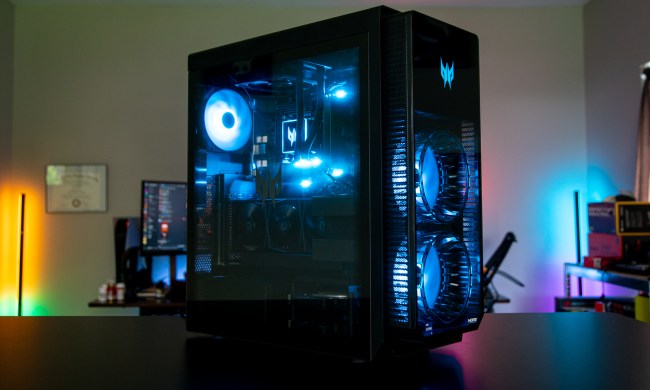A.I.-driven hardware produced by Microsoft is on the horizon according to Harry Shum, executive vice president of the company’s A.I. and Research Group. It’s part of Microsoft’s initiative to integrate artificial intelligence into every product and service offered by the company. Shum says these devices will be “very, very exciting.”
The comment arrives after Microsoft CEO Satya Nadella announced yet another reorganization within the company, with the result creating two new engineering teams: the Experiences & Devices group led by Rajesh Jha, and the Cloud and A.I. Platform group led by Jason Zander. Harry Shum will continue to run the current A.I. and Research group.
“When we established A.I.+R nearly two years ago, our primary goal was to accelerate the adoption of A.I. innovations from research into product, and the changes we are making today reflect our strong progress,” said Nadella in an email to Microsoft employees last week. “We will continue to drive investments in A.I.+R across research and A.I. breakthroughs that are key to our long-term success.”
Since the launch of Microsoft’s A.I. and Research group in September 2016, around 3,000 workers have joined the original 5,000 crew before Microsoft’s reorganization last week. In that time, Microsoft introduced a bot framework for adding interactive assistants and chatbots to services and tools. The company even improved its language translation technology over the last 18 months.
Additionally, the company now serves up cognitive services on its Azure platform, bringing speech recognition, vision knowledge, and other technologies into developers’ hands. Meanwhile, Microsoft is taking on Salesforce by moving its A.I. technologies for business applications over to the new Cloud and A.I. Platform group to create new “dynamic” versions.
Another example is the next version of HoloLens, the company’s headset that supports high-resolution augmented reality. It will be based on the company’s custom Holographic Processing Unit with an integrated coprocessor to specifically handle artificial intelligence and ultimately deep neural networks. But Microsoft isn’t just trying to make HoloLens smarter: the company is working on dedicated A.I. processors for a portfolio of devices.
“We have to continue to find those pieces of silicon, those chipsets that have to be developed to bring sensors to life, to connect people with each other and with their products,” Panay admitted to CNBC in November.
As the network points out, Microsoft needs to catch up in the A.I. chip race given that Apple already installs its Bionic chip inside iPhones, and Huawei’s Mate 10 smartphone relies on the Kirin 970 chip with a built-in neural network processing unit for A.I. acceleration. Both enable faster, on-device artificial intelligence versus devices that require the cloud to perform A.I.-based tasks.
Given that Microsoft manufactures a number of first-party devices, adding a proprietary processor to specifically handle Cortana and other A.I.-related tasks makes sense. As Panay stated in his email to employees last week, the company has a responsibility to “ensure technology’s benefits reach people more broadly across society.” But these technologies must also be trustworthy for individuals and organizations alike.


